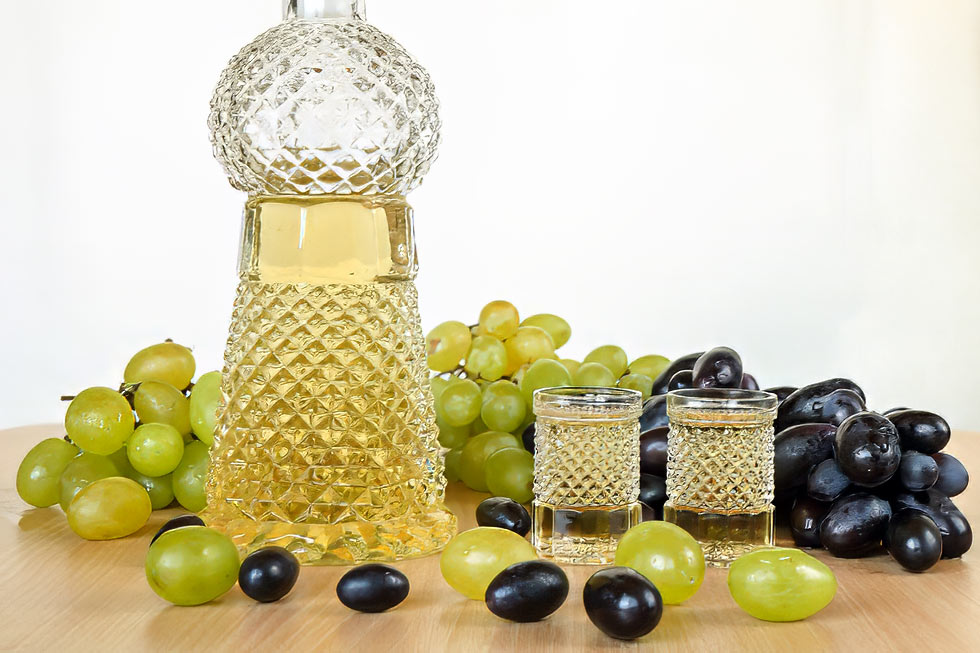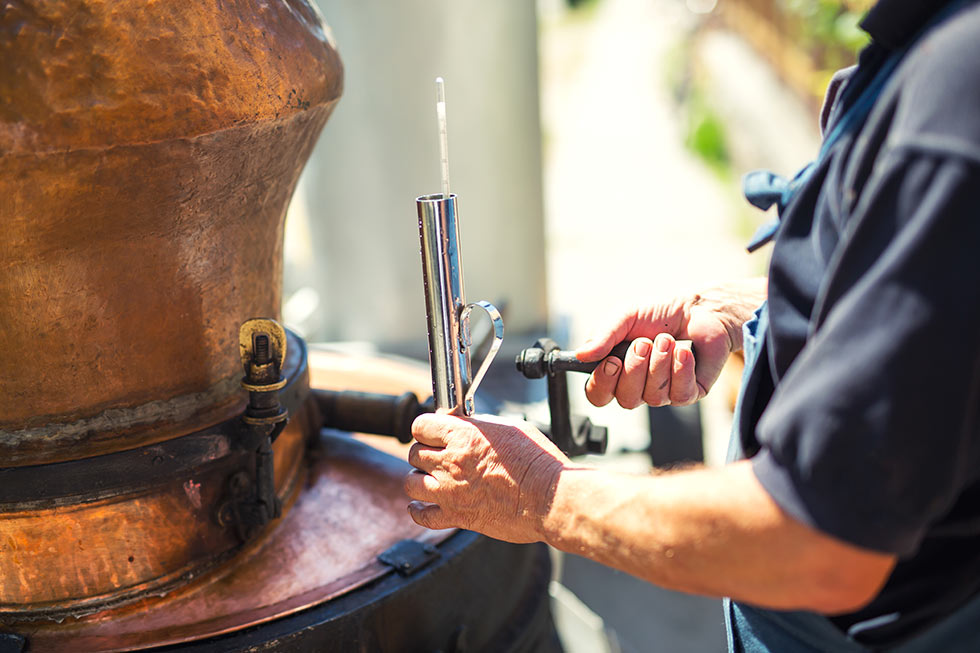To understand Bulgaria, you need to sip its soul, and that soul burns at 40% ABV.
Rakia (ракия) is not just a spirit. It’s a heritage, a symbol of hospitality, and an unspoken language of celebration, mourning, diplomacy, and defiance. Whether sipped from a crystal shot glass in Sofia or drawn from a reused soda bottle in a mountain village, rakia carries with it centuries of Bulgarian resilience, craft, and conviviality.
We will quickly take you deep into rakia’s roots, distill its present, and explore its contested future, from EU regulations to export ambitions.
Origins: Rakia’s Ancient Ancestry
The exact origins of rakia are hard to pinpoint. Its name likely derives from the Arabic “araq” (عرق)—meaning “distilled” or “sweat”—reflecting possible influence from early Middle Eastern distillation techniques during the Arab Golden Age (8th–13th centuries).
By the 13th–14th centuries, distillation had reached the Balkans via Arab, Byzantine, and Mediterranean trade routes. Bulgaria’s earliest rakia-related artifacts—including primitive alembic stills—have been dated to the 14th century, making Bulgaria one of the first places in Europe where fruit brandy was systematically distilled.
Unlike grape wine, rakia was an efficient way to preserve fruit, especially in rural mountain regions where surplus harvests could be fermented and stored long-term. Over time, it evolved from a survival method into a cultural cornerstone.
Rakia in Bulgarian Tradition: A Drink for Every Moment
In Bulgaria, rakia is not just seasonal—it’s existential.
Celebrations
- Weddings begin with rakia. Toasts to the bride and groom, poured from heirloom flasks or plastic jugs.
- Name days, birthdays, village fairs—always rakia before the salad.
Rituals of Remembrance
- During pomana (memorials for the deceased), rakia is poured in memory, often with a piece spilled on the earth—for the soul.
Hospitality
- Visitors to a Bulgarian home are welcomed with rakia and bread. To refuse politely is to err; to refuse rudely is sacrilege.
The Salad Rule
Rakia is always served before or with salad (shopska, pickles, lutenitsa). Never with dessert. Never after the main dish. And never warm.
How Rakia Is Made: From Orchard to Fire
Rakia production follows the ancient rhythm of autumn harvest and winter distillation. The process can be artisanal or industrial, but the core stages remain essentially unchanged.
Fruit Selection & Fermentation

The base fruit defines the rakia type. The most common are:
- Grapes (grozdova rakia) – classic, golden, with notes of raisins or barrel spice
- Plums (slivova) – slightly sweet, earthy, especially popular in western Bulgaria
- Apples, apricots, peaches, cherries, quinces – used for special rakias and rakia flavouring
- Mulberry (dudova) – rare, sweet, prized in the south
Fruits are mashed and fermented in barrels for 15–30 days, allowing natural yeasts (or added cultures) to convert sugar to alcohol.
Distillation

The fermented mash is distilled once or twice in copper stills (казан), traditionally fired with wood or charcoal. Today, many villages have communal distilleries where locals book time slots.
- One-time distillation yields a rougher rakia (~40–45% ABV)
- Double distillation produces a smoother, cleaner spirit (~50–60% ABV before dilution)
Dilution, Resting, and Aging

- Diluted to 40–44% ABV with spring water
- Unaged rakia is bottled clear (white rakia)
- Aged rakia rests in oak barrels (3 months to several years), developing golden hues and complex aromas.
Varieties of Bulgarian Rakia: A Map of Flavor
Just as wine has terroir, so does rakia. Each region favors its own fruit, style, and subtle alchemy.
| Region | Popular Rakia Type | Notes |
|---|---|---|
| Thracian Valley | Grozdova (grape) | Often aged, floral, rounded |
| Elena Balkan | Slivova (plum) | Earthy, robust, sometimes smoked |
| Ruse region | Duden rakia (mulberry) | Sweet, rare, highly prized |
| Sandanski-Melnik | Apricot or peach rakia | Fruity, fragrant, delicate |
| Lovech region | Quince (dюлева rakia) | Aromatic, niche connoisseur’s favorite |
Branded Rakias like Peshterska, Troyanska Slivova, or Burgas 63 dominate shops and exports, but village-made rakia (“домашна ракия”) is king in social life.
Home vs Commercial Rakia: Two Worlds, One Flame
Домашна ракия (Homemade rakia)
Made in small quantities by families or neighbors, often using backyard fruit and community stills.
- Often stronger (50–55%)
- Served in reused bottles, labeled with masking tape or not at all
- Highly prized; some families guard recipes for generations
- Legally tolerated (see below), but not for resale
Commercial Rakia
Produced under strict licensing, subject to EU excise regulations, safety standards, and labeling laws.
- Brands like Karnobat, Burgas 63, Peshterska, Teteven, and Troyanska Slivova dominate the domestic market
- ABV is regulated at a minimum of 37.5% for fruit brandies (EU standard)
- Some premium brands are aged and presented like cognac or whisky
Rakia and the European Union: Identity Meets Regulation
When Bulgaria joined the EU in 2007, one of the most controversial negotiations involved… rakia.
What was the EU’s Goal?
- Standardization of excise tax on home distillation
- Ban on unlicensed production and sale
- Harmonization of terminology across “fruit brandy” categories
What Bulgaria Defended:
- The right to produce home rakia for personal use (up to 30L/year per household)
- The name “rakia” is a geographically protected term
Outcome:
- Bulgaria secured the right to keep the word “rakia” and limited home production.
- However, commercial rakia producers must comply with all EU regulations (bottling, excise stamps, minimum alcohol content, etc.).
The fight to recognize rakia as Bulgaria’s “national drink” under EU PDO/PGI rules continues. So far, several specific brands (Troyanska Slivova, etc.) have applied for protected status, but not rakia as a whole.
How Rakia is Consumed in Bulgaria
Forget shots and lime wedges, Bulgarian rakia is not vodka.
The Ritual
- Served cold in small stemmed or tulip-shaped glasses (30–50 ml)
- Always before or with salad—especially shopska, pickled peppers, lukanka, or sirene
- Sipped slowly, with conversation, never slammed
Pairings
- Grape and Plum rakia: with shopska salad, roasted peppers
- Quince rakia: with cured meats, nuts, cheeses
Pro tip: If a Bulgarian grandparent pours it for you, accept. If they made it themselves, toast them appropriately: “Nazdrave!”
Rakia and Modern Bulgaria: Between Heritage and Business
- Annual rakia production (commercial): Estimated 35-50 million liters
- Home production (for home use only): Likely double that – 70-100 million liters
- Exports: Still modest, under €10M/year, mostly to diaspora markets (Germany, UK, Spain, USA)
Where to Try Rakia in Bulgaria
| Seasonal occurence | Expectations and experience |
|---|---|
| Rakia Raketa Bar (Sofia) | Dozens of rakia labels, Balkan retro chic setting |
| Rakia tasting in Plovdiv | Often offered in wine bars or boutique distilleries |
| Troyan Monastery Distillery | Taste authentic slivova near the source |
| Family meal in a Bulgarian village | Best experience, if you’re lucky to join one |
Rakia Festivals (check seasonal calendars):
- Troyan Slivova Fest (September)
- Balkan Rakia & Spirits Fest (Sofia, Winter)
Typically, every restaurant in Bulgaria will have a variety of rakia for you to choose from.
A Spirit That Still Speaks
In Bulgaria, rakia isn’t trying to be trendy. It doesn’t need a mixologist or a brand manager. It already has something more powerful: memory, ritual, and place.
To sip rakia is to sip stories of harvests, rebellions, reunions, and resilience. It’s the welcome handshake of a village elder and the defiant warmth in the coldest winter toast.
And while it may still struggle for EU recognition or commercial polish, rakia has already won what matters most: the love of its people.
So next time you’re in Bulgaria—whether on a mountain trail, at a Black Sea table, or in a hidden village courtyard—ask for a glass of rakia. You won’t just be drinking. You’ll belong.


